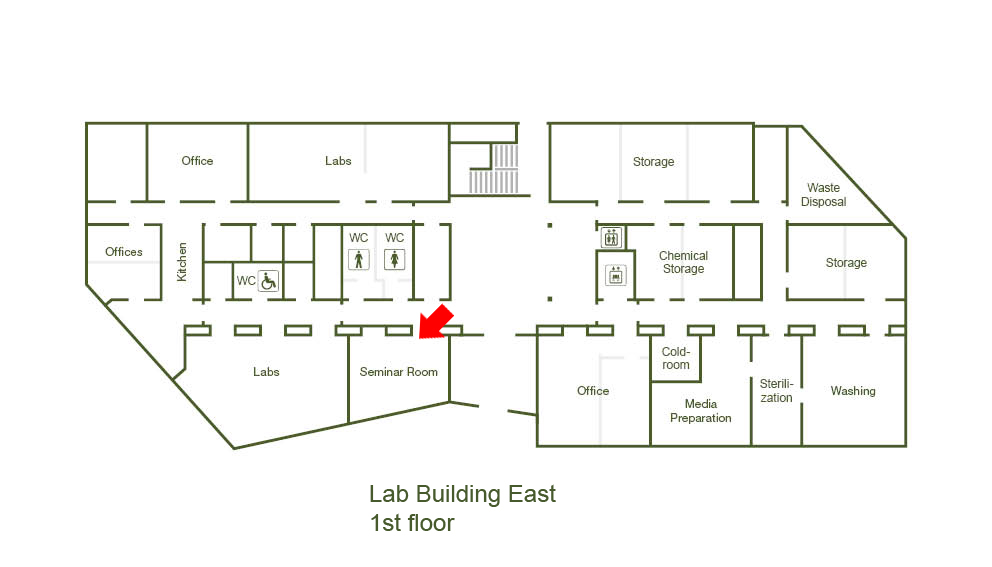Semaphorin Receptor Function in Hedgehog Signal Transduction
Date
Thursday, May 24, 2018 11:00 - 12:00
Speaker
Justine Pinskey (University of Michigan, Ben Allen lab)
Location
Seminar Room, Lab Building East
Series
Seminar/Talk
Tags
Life Sciences Seminar
Host
Ani Kicheva
Contact

Hedgehog (HH) signaling is essential for embryonic and postnatal development, while perturbation of HH pathway function can lead to a variety of developmental diseases, birth defects and cancer. Neuropilins, which have well-characterized roles in Semaphorin and VEGF signaling, have recently been implicated in the regulation of HH signaling. Neuropilins contain short, catalytically inactive cytoplasmic domains, requiring Plexin co-receptors to regulate small intracellular GTPases during Semaphorin signal transduction. However, the mechanism of Neuropilin function in HH signal transduction remains unclear, and a role for Plexin proteins in HH signaling has not been explored. Using HH-dependent luciferase reporter assays in NIH/3T3 cells, we show that the Neuropilin-1 cytoplasmic and transmembrane domains are both necessary and sufficient to regulate HH pathway activity, independently of Plexin and Semaphorin binding. Our data suggest that Neuropilin-1 selectively regulates GLI activator function through a novel 12-amino acid cytoplasmic motif. Strikingly, we also find that multiple Plexin family members promote HH signaling. Point mutations in the GTPase activating (GAP) domain of Plexins prevent HH pathway promotion, suggesting that GAP function is required for Plexin-dependent HH regulation. Furthermore, deletion of the autoinhibitory Plexin-A1 extracellular domain significantly increases HH pathway activity, providing additional evidence that Plexin GAP activity regulates HH signaling. Together, our data suggest that Neuropilins and Plexins regulate HH signaling downstream of ligand activation through distinct cytoplasmic mechanisms. Therapeutic approaches targeting Semaphorin receptors may be useful to regulate overactive HH signaling in cancer and other diseases.